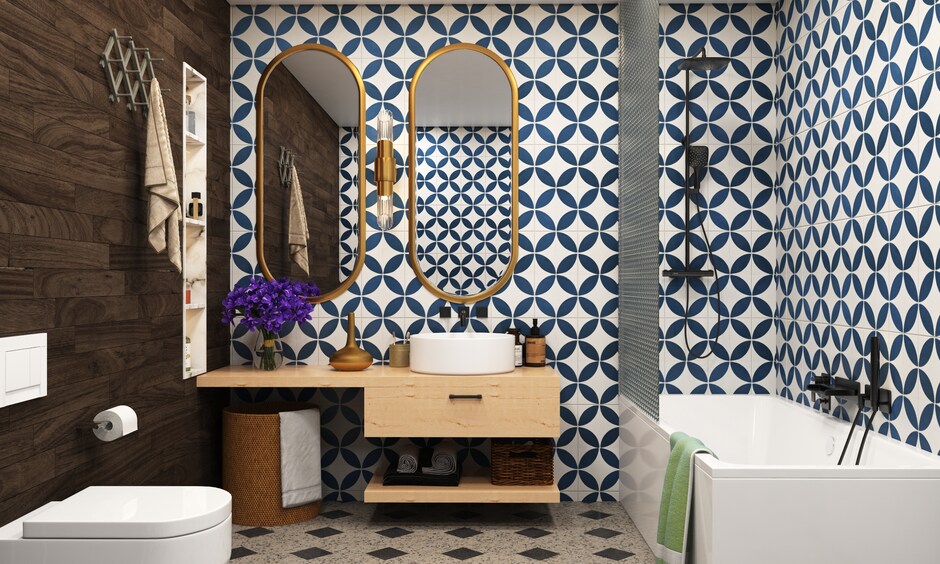Choosing the right tile for your bathroom melds both aesthetic appeal and functionality into your decision-making process. The right tiles not only elevate the visual dynamics of the space but also cater to the practicality of high-moisture environments.
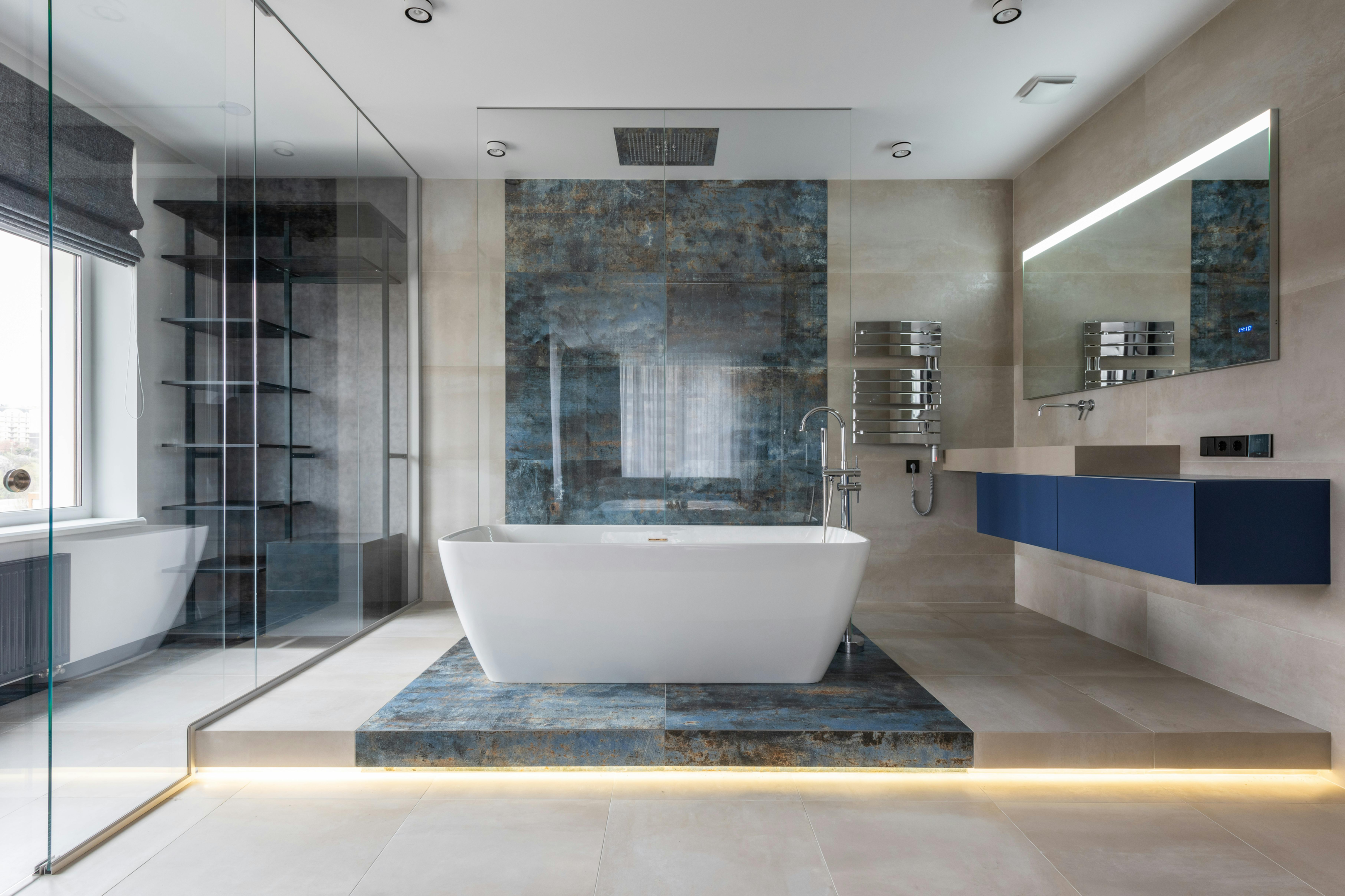
Whether revamping an existing bathroom or designing a new one, the tiles you select impact the room’s atmosphere and its maintenance needs. From ensuring durability to reflecting personal style, the choice of bathroom tiles is crucial in creating a space that is both beautiful and enduring.
Understanding the Basics of Bathroom Tiles
When selecting bathroom tiles, it’s essential to consider several key factors that go beyond mere visual appeal. The best tiles for your bathroom will be those that can handle moisture effectively, resist slipping, and match the overall design theme of your home.
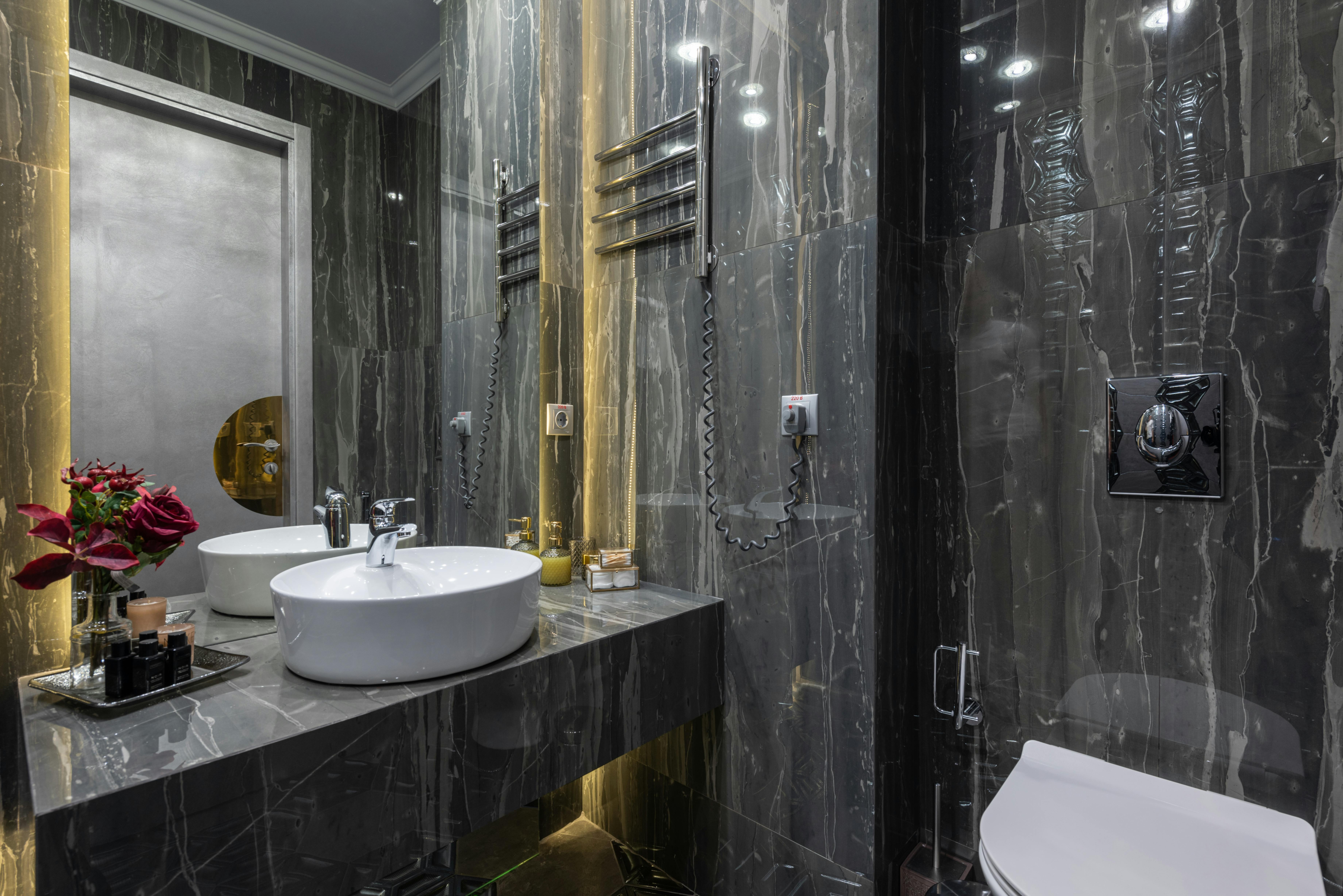
Additionally, consider the ease of cleaning and the longevity of the tile’s surface. These elements ensure that the tiles you choose are practical for a bathroom’s unique conditions while still fulfilling your stylistic preferences.
Types of Bathroom Tiles
Ceramic Tiles
Ceramic tiles are a staple in bathroom design, known for their durability and wide range of styles. Easy to maintain and resistant to dampness, ceramic tiles can fit seamlessly into almost any bathroom design, from rustic to modern.
Glass Bathroom Tiles
Glass tiles offer a luminous quality that can open up the bathroom space by reflecting light. Ideal for feature walls or as accent pieces, glass bathroom tiles come in various hues and finishes that can amplify the aesthetic of a bathroom without overwhelming it.
Natural Stone Tiles
For those looking for luxury and uniqueness, natural stone tiles are a premier choice. Materials like marble, granite, and slate bring a natural, rich texture that is distinctively different in each tile. Though they require more upkeep, their robust and timeless appearance makes them a favored option for statement areas.
Mosaic Tiles
Mosaic tiles allow for creative expression through intricate patterns and vibrant colors. They are often used in shower areas, as backsplashes, or to create striking feature walls. Available in materials like glass, ceramic, and natural stone, mosaic tiles can add both color and drama to any bathroom setting.
In each category, factors such as tile color, size, and grout lines play significant roles. Whether you opt for soothing neutral colors or bold and patterned tiles, each choice should align with both your bathroom’s functional needs and your personal design aesthetic.
Factors to Consider When Choosing Your Bathroom Tile
When selecting tiles for your bathroom, consider factors like durability, water resistance, and maintenance. The bathroom environment is uniquely harsh, involving exposure to moisture and chemicals, frequent cleaning, and heavy foot traffic.
Therefore, choosing tiles that can withstand these conditions while maintaining their appearance is crucial. Durability ensures the tiles resist cracking and chipping. Water resistance is essential to prevent water damage and mold growth, and low-maintenance tiles help keep the bathroom hygienic without requiring excessive effort.
Tile Size and Shape
The size and shape of your bathroom tiles can significantly influence the overall feel and functionality of the room. Large format tiles give a modern look and feel while making the space appear larger and reducing the number of grout lines, which simplifies cleaning.
Smaller tiles, on the other hand, are ideal for adding texture or creating specific patterns, such as diagonal patterns that can make the bathroom feel more dynamic. The choice between large and small tiles often depends on the specific aesthetic and practical needs of the bathroom layout.
Color and Finish Options
The color of the tiles plays a pivotal role in defining the bathroom’s aesthetics. Lighter colors make a small bathroom feel larger and more open, while bold colors can add depth and vibrancy to a larger space. Neutral colors offer versatility and longevity, easily adapting to various decor changes over time. The finish of the tiles also affects both the look and practicality of the bathroom.
Matte finishes are less slippery when wet, making them a safer choice in wet areas like the shower floor. They also hide water spots and smudges better than glossy finishes, which, while sleek and attractive, can show more dirt and smudges, requiring more frequent cleaning. However, glossy tiles reflect more light, enhancing the brightness of the bathroom.
Designing With Tiles
Tiles are not just functional elements in a bathroom; they are pivotal in defining its character and style. To enhance bathroom design, consider creating a feature wall with tiles that contrast dramatically with those on other walls, using either bold patterns or vibrant colors. Feature walls act as focal points and can transform the aesthetic of the space. Using accent tiles can also add visual interest and depth, helping to break up monotonous areas.
For a harmonious look, match floor tiles with wall tiles, considering both color and texture to ensure they complement each other. When designing with tiles, think about the overall theme you want to achieve—whether it’s modern, classic, or eclectic—and select tiles that contribute cohesively to that vision.
Choosing Tiles for Wet Areas
For areas exposed to significant moisture, such as the shower area, choosing the right tiles is crucial. Shower floors require non-slip tiles to ensure safety, while the walls may benefit from moisture-resistant tiles that reduce the risk of mold and water damage.
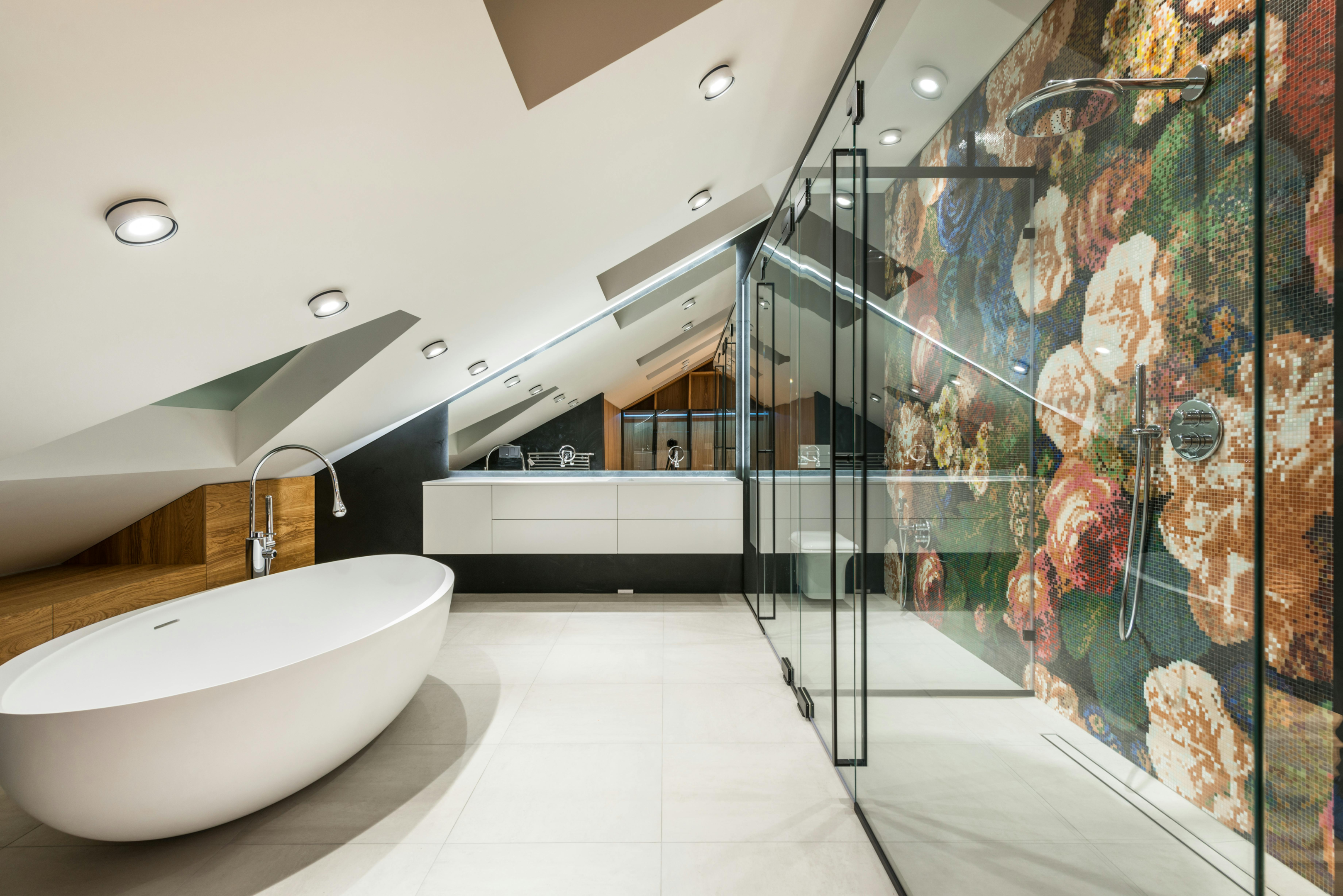
Consider using smaller mosaic tiles on shower floors for better grip due to more grout lines, and larger, easier-to-clean tiles on the walls. Materials like glazed ceramic or porcelain are ideal for these wet areas due to their low porosity and high durability.
Grout Considerations
The choice of grout is critical in tile installation, impacting both the aesthetics and longevity of the tile work. Grout lines should complement the tile size—larger tiles often look better with thinner grout lines, while smaller tiles can handle thicker grout lines. Choosing the right grout colour also plays a significant role; white grout can create a seamless look, enhancing the tiles’ brightness, but may show dirt easily.
Black grout, on the other hand, can offer striking contrast, particularly with lighter tiles, and is more forgiving with stains. It’s important to consider both the design impact and practical maintenance when selecting grout.
Practical Tips for Choosing Bathroom Tiles
Balancing aesthetics with functionality is essential when choosing bathroom tiles. In wet areas, prioritize materials that offer slip resistance and water resistance to ensure safety and durability. For small spaces, opt for lighter tiles that make the area appear larger and choose glossy finishes to reflect light.
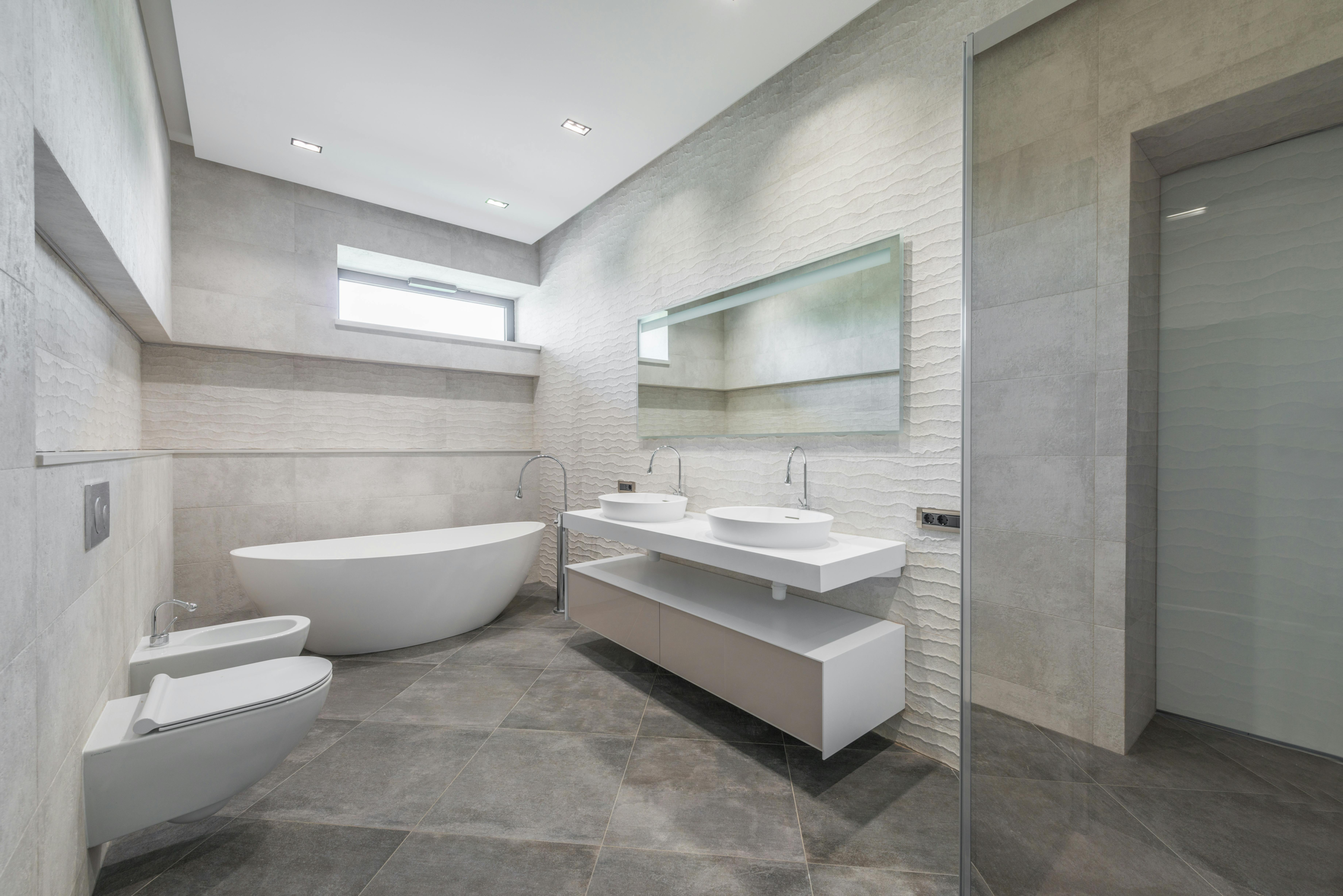
In larger spaces, you have the flexibility to experiment with bold colors and large format tiles. Always consider the room’s functionality, the amount of traffic, and the maintenance required when selecting tiles, ensuring that they not only look good but are also practical for the bathroom’s intended use.
Using the Right Tiles to Make a Small Bathroom Look Bigger
To enhance the perception of space in a small bathroom, choosing the right tiles can have a significant impact. Light colors naturally make a room feel bigger and more open because they reflect more light than darker shades. Smooth, glossy tiles can amplify this effect by bouncing light around the room, creating a brighter and more airy space.
Additionally, using large format tiles with minimal grout lines can make the bathroom appear less cluttered and more seamless. Opting for a consistent color palette and extending the same tiles from the floor onto the walls can further enhance the illusion of a continuous, expansive space.
Tile Patterns and Layouts
The way tiles are laid out can dramatically alter the perception of space within a bathroom. Using the same tiles on both the bathroom floor and walls can create a unified look that visually expands the space. Diagonal patterns, such as laying tiles at a 45-degree angle, can make the room appear wider and longer.
Another effective layout is the use of linear or rectangular tiles arranged in a running bond or herringbone pattern, which draws the eye along the pattern’s direction, thereby extending the perceived space. These strategic tile layouts can manipulate visual perception and make a small bathroom feel larger.
Latest Trends in Bathroom Tiles
Contemporary bathroom tile trends are all about adding personality and vibrancy to your space. Patterned tiles are gaining popularity, with bold geometric patterns and intricate designs that can turn a simple bathroom into a stunning statement piece. Fun colors are also trending, with homeowners choosing vibrant blues, greens, and even pinks to inject a playful element into their bathroom designs.
Additionally, textured tiles that add tactile interest are becoming more common, offering not only visual depth but also a unique sensory experience. These trends reflect a move towards more personalized, expressive bathroom decor that complements modern aesthetics and lifestyles.
Selecting the Perfect Bathroom Floor Tile
Choosing the right bathroom floor tile is crucial as it sets the tone for the room’s overall design and functionality. When selecting floor tiles, consider both the aesthetic appeal and the practical demands of your bathroom’s environment. Opt for tiles that can withstand frequent moisture exposure and are slip-resistant to ensure safety.
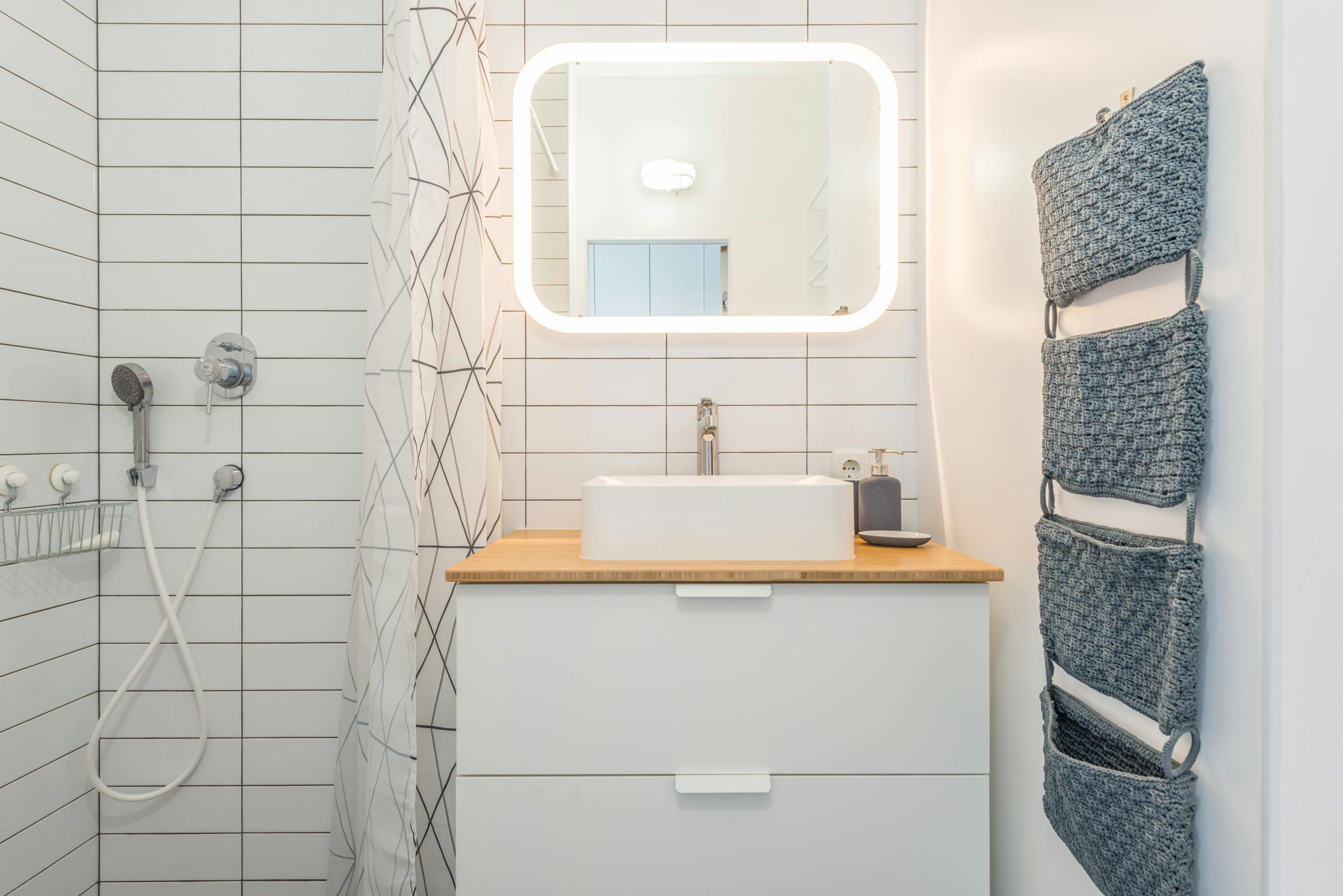
Ceramic and porcelain tiles are popular choices for bathroom floors due to their durability and water resistance. Additionally, if you prefer a cohesive look, using the same tile for both the floor and the walls can visually expand the space and create a seamless aesthetic throughout the bathroom.
Wall Tiles: Enhancing Style and Functionality
Wall tiles play a key role in protecting your bathroom from moisture while adding to its aesthetic appeal. Glass bathroom tiles, for example, offer a sleek and modern look, reflecting light to make the space appear larger and more open. When selecting wall tiles, consider their ease of cleaning and resistance to soap scum and water stains. Incorporate tiles that complement or contrast with the floor tiles to create a balanced and harmonious design.
Call To Action
Contact us today to schedule a consultation and discover how our comprehensive approach to construction can benefit your project. From strategic planning and innovative technology integration to efficient resource management and meticulous attention to detail, we are dedicated to exceeding your expectations every step of the way.
With RJT Construction, you can rest assured that your project will be completed on time, within budget, and to the highest standards of quality and craftsmanship. Don’t settle for anything less than excellence – partner with RJT Construction and experience the difference for yourself. Let’s build something extraordinary together. As one of the premier remodeling companies in Houston, RJT Construction offers expertise in strategic planning, innovative technology integration, efficient resource management, and meticulous attention to detail.

